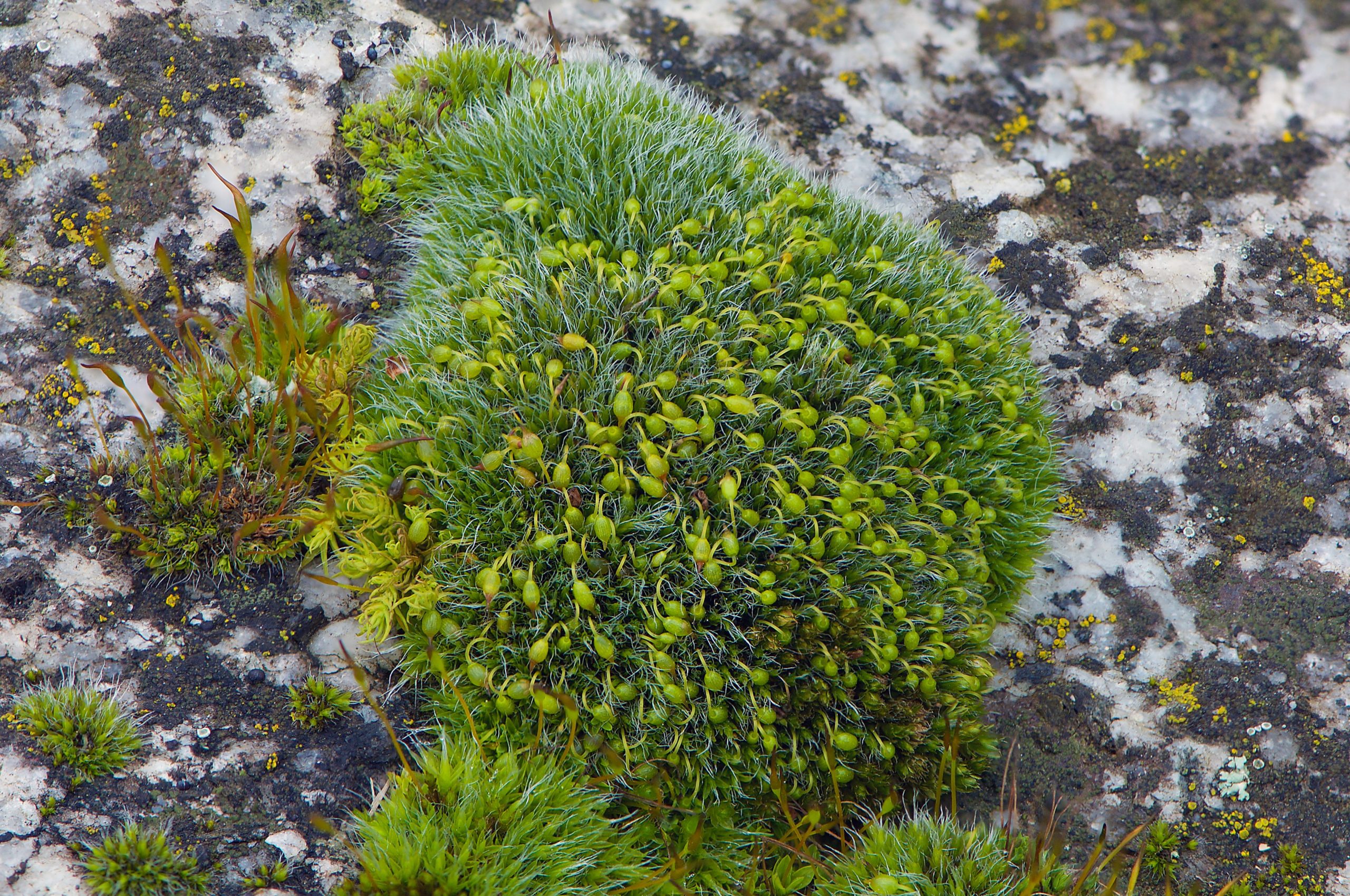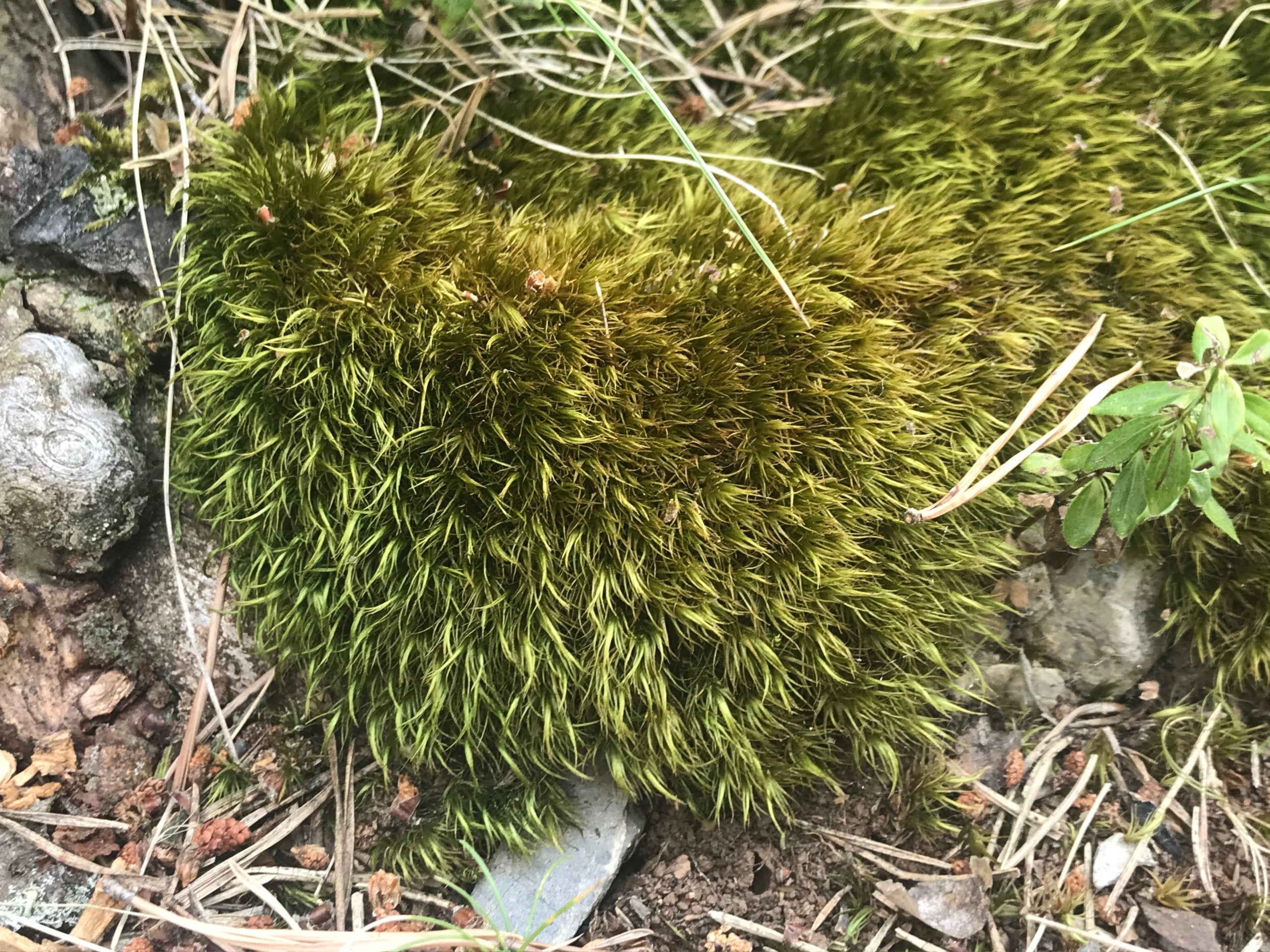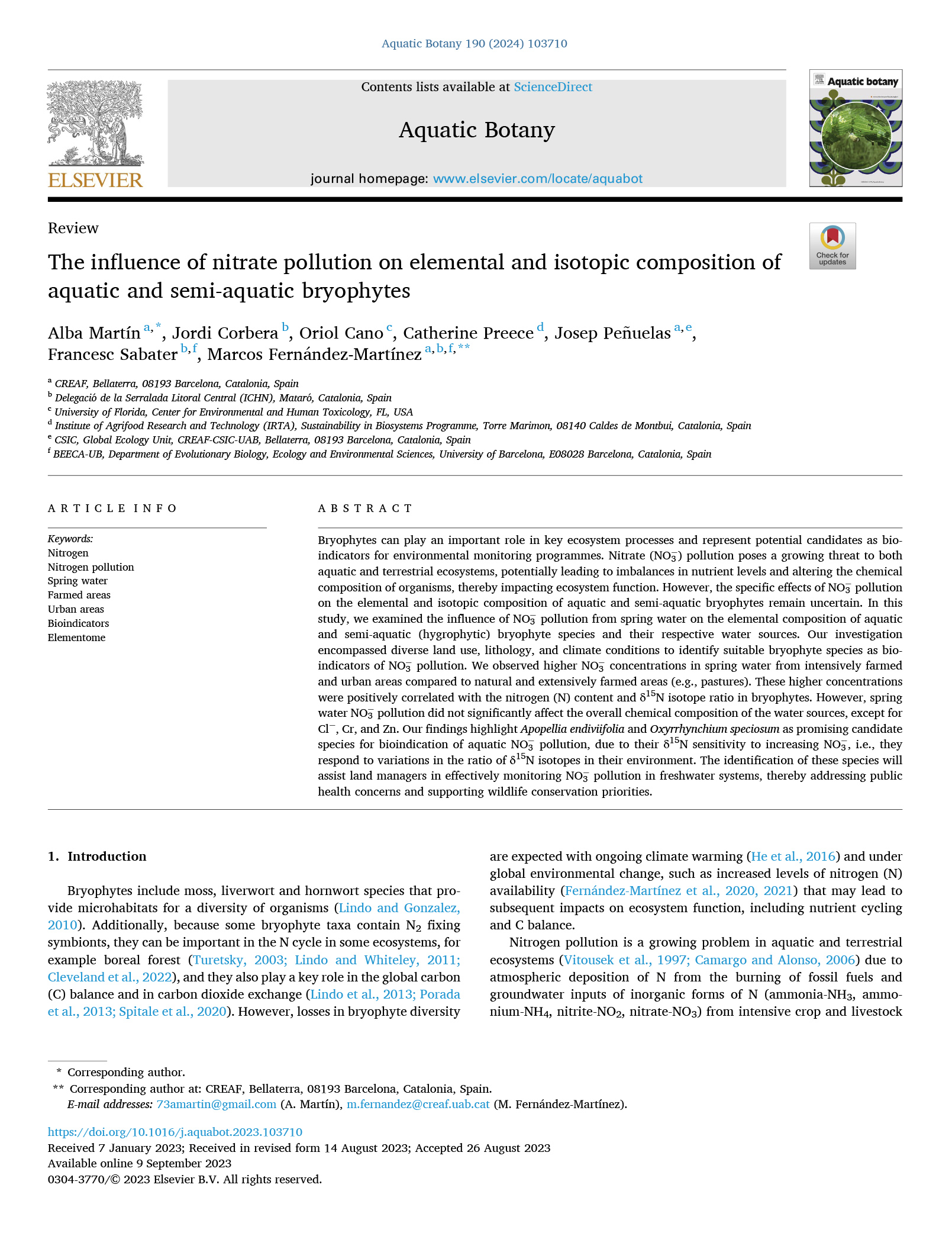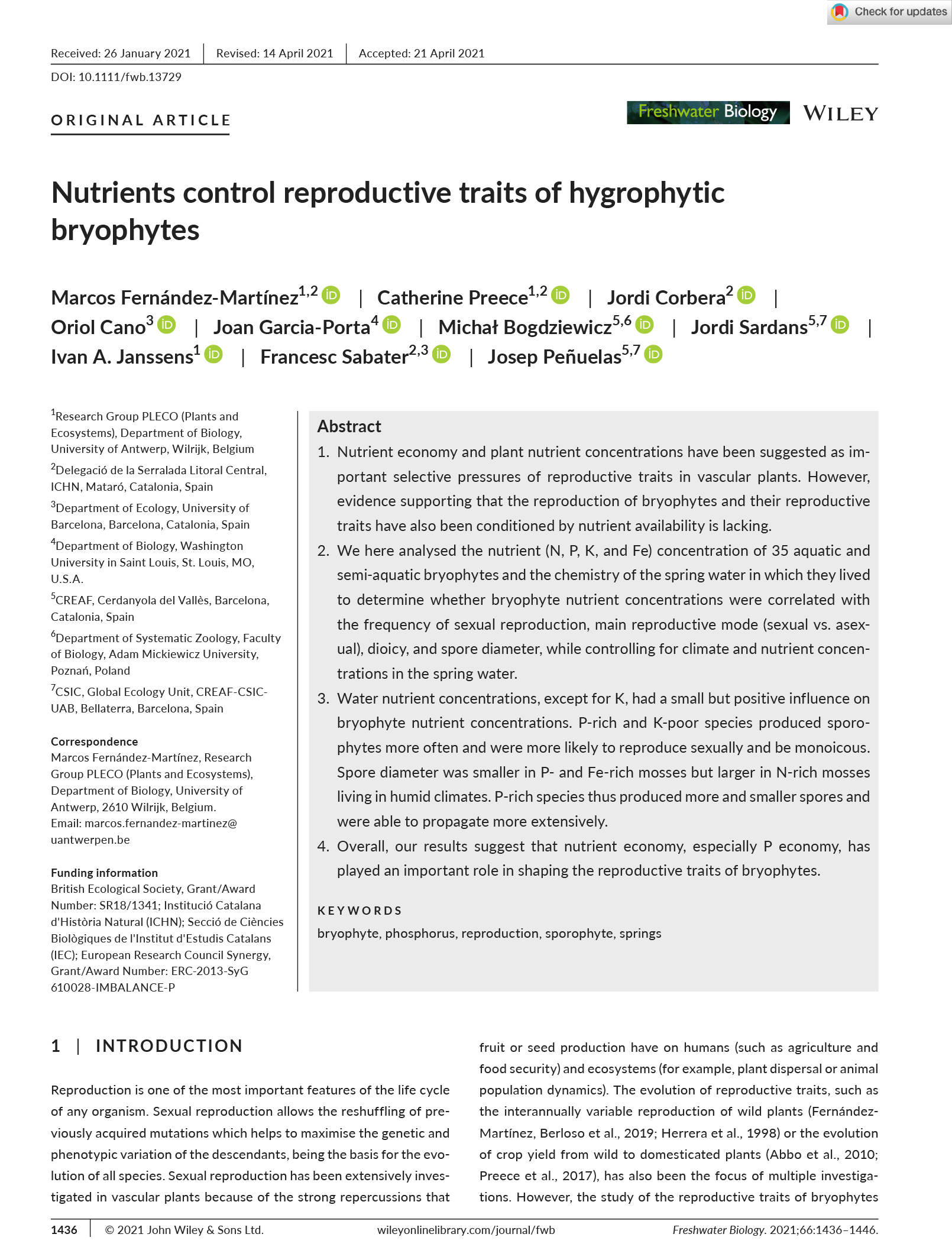PROJECTE QUíMICA NATURALISTA
L’objectiu general d’aquest estudi és investigar com els diferents hàbitats i la proximitat a punts de contaminació determinen la composició elemental dels briòfits. Esperem veure diferències en la composició elemental a causa del tipus d'hàbitat (epífits, terrícoles, saxícoles i higrofítics) i la filogènia de les espècies. A més, els briòfits que creixen en llocs amb alta contaminació per nitrats contindran concentracions més altes de N i canvis en δ15N (Elliot et al., 2019). També poden acumular grans quantitats d’elements traça presents al seu entorn (Tyler 1990; Zechmeister et al. 2003) de manera que els briòfits que viuen en entorns amb contaminació haurien de tenir concentracions més altes d’aquestes elements.
Fruit dels resultats obtinguts del Projecte Fonts (2013-2020), l'any 2021 ja vam iniciar una nova línia de recerca basada en la composició elemental dels briòfits. Una de les qüestions encara no resoltes, i particularment interessant des del punt de vista de l’evolució de les plantes, és l’estudi de l’evolució de les concentracions d’elements químics i la seva estequiomètrica elemental, (és a dir, carboni [C], nitrogen [N], i fòsfor [P], entre d’altres) segons sigui la seva filogènia (hepàtiques, antocerotes, molses) i l’habitat que ocupen als ecosistemes (e.g., saxícoles, epífits, terrícoles, higrofítics). Aconseguir aquestes dades és molt rellevant en el camp de la briologia i l’ecologia, perquè la composició elemental dels teixits vegetals (normalment fulles) proporciona informació sobre l’estat nutricional i fisiològic de les plantes i sobre les estratègies ecològiques que segueixen els organismes. Addicionalment, l’anàlisi elemental dels briòfits (e.g., δ15N, metalls pesants) s’ha fet servir també com a mètode de seguiment de la contaminació ambiental (aigua i aire). Per tant, aquestes dades tindrien també el valor afegit de ser útils de cara a localitzar punts de contaminació del país. Durant el 2021 ja es van obtenir els primers resultats pel que fa als briòfits higrofítics que han estat publicats en revistes científiques indexades al SCI (Plants, Ecology Letters i Freshwater Ecology) .
Durant les campanyes de 2021 i 2022 s'han obtingut i analitzat un total de 201 mostres de 62 espècies de briòfits. Durant el 2023 es vol obtenir mostres de zones urbanes i també pròximes a potencials focus de contaminació (com podrien ser gans polígons industrials), i alhora ampliar el ventall d'espècies per tal d'obtenir una diversitat filogenètica més àmplia.
Amb el suport de:



Algunes protagonistes






Què fem


Resultats del projecte

Martín et al. 2024. The influence of nitrate pollution on elemental and isotopic composition of aquatic and semi-aquatic bryophytes Aquatic Botany, 109: 103710; https://doi.org/10.1016/j.aquabot.2023.103710

Fernández-Martínez et al. 2021. Nutrients control reproductive traits of hygrophytic bryophytes. Freshwater Biology, 66: 1436–1446. https://doi.org/10.1111/fwb.13729

Fernández-Martínez et al. 2021. Bryophyte C:N:P stoichiometry, biogeochemical niches and elementome plasticity driven by environment and coexistence. Ecology Letters, http://dx.doi.org/10.1111/ele.13752

Fernández-Martínez et al. 2021. Do bryophyte elemental concentrations explain their morphological traits? Plants, 10 (8): 1581; https://doi.org/10.3390/plants10081581
